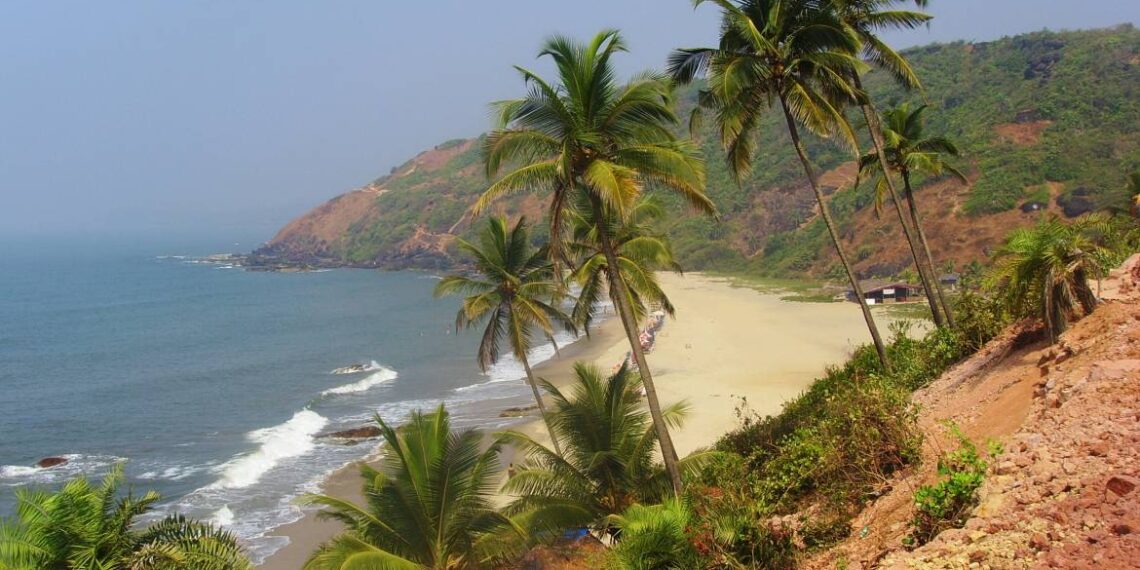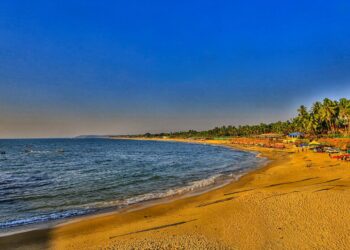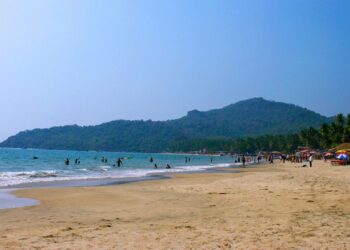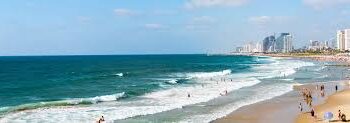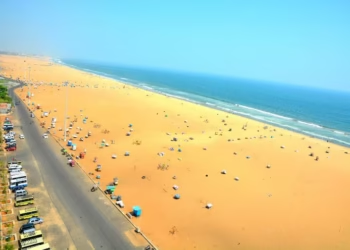Arambol Beach is a peaceful yet lively seaside spot in North Goa, found in the Pernem area. It stretches for about 2 kilometers along the Arabian Sea and sits around 50 kilometers away from Panaji, the capital city. The beach is loved for its soft golden sand, calm mood, and a mix of local and foreign visitors who come for yoga, music, and nature. Run by the Goa Tourism Department with help from local groups, Arambol tries to keep a good balance between visitors and the environment.
Fun Fact About Arambol Beach
At Arambol Beach, there is a small freshwater lake called Sweet Water Lake, or Paliem Lake as locals say. It lies between rocky cliffs and some forest area, filled by natural springs. Many people think the water here is good for the body and has healing effects. It’s just a short walk from the main beach, and the place stays quiet, good for swimming, resting, or sitting alone in peace.
History of Arambol Beach
Arambol Beach has its roots as a quiet fishing village where the local Konkani-speaking people lived mainly from the sea. The name “Arambol” comes from “Harmal,” the village’s older name, which likely refers to its green, coastal surroundings. During the Portuguese rule from the 1500s to the 1900s, Arambol stayed mostly untouched and simple, away from the busy trading centers like Panaji. Fishing boats and small traders often stopped here while moving along the northern coast of Goa.
In the 1960s and 1970s, Arambol began to change when foreign travelers especially those from the hippie movement, discovered its peaceful beach and natural beauty. They made it a space for art, music, and free living, creating a laid-back culture that still shapes the place today. Drum circles, small cafes, and handmade markets slowly grew around this community, giving Arambol its unique, artistic charm.
By the 1990s, it became a favorite spot for backpackers looking for quiet stays, with beach huts and small guesthouses coming up along the shore. Over time, yoga centers and wellness retreats opened, drawing visitors interested in peace and natural healing. Local authorities now take steps to protect the environment, like taking down shacks during the off-season and preserving Sweet Water Lake nearby.
Things to Do at Arambol Beach
Beach Relaxation:
The golden sand is soft and nice for lying down, reading, or just resting under a palm tree. Small shacks rent sunbeds and umbrellas (around ₹100–₹300 a day) and serve tasty Goan food like prawn curry and mango drinks.
Water Fun:
The sea near Arambol is usually calm and safe for swimming, and lifeguards stay around during busy months. People try paragliding, kite surfing, or go for dolphin rides on small boats (₹500–₹2,000). Kayaking near the north side of the beach is also liked by many.
Sweet Water Lake Walk:
If you walk about 15 minutes through rocks and trees, you reach Paliem or Sweet Water Lake. It’s quite a quiet place for a swim or to just sit and relax. You can also view birds and nice sea views on the way.
Yoga and Wellness:
Many visitors come here for yoga and healing. Small centers and huts offer Ayurvedic massage, yoga and reiki sessions. The Himalayan Iyengar Yoga Centre is quite known.
Music and Evenings:
At night, the beach becomes lively with drum circles, fire shows, and live music at shacks like Loekie Cafe. Some evenings are quieter, with people sitting by bonfires watching the stars.
Shopping:
Along the main road, the Arambol market sells handmade jewelry, colorful clothes, and small crafts. The Harmal Market nearby has spices and local fruits on weekends.
Nearby Places:
Querim Beach which is around 3 km north, is peaceful and also less crowded. You can also visit Terekhol Fort (10 km away) built in Portuguese times or even the old Parvati Temple in Pernem (15 km away) that is known for its traditional style.
Best Time to Visit Arambol Beach
November to February:
These months bring clear blue skies and calm waves, good for swimming, yoga, or paragliding. The weather stays very pleasant at around 22°C to around 32°C. Many visitors also come during Christmas and New Year so huts and shacks often get booked early.
March to May:
The days start getting warmer, between 28°C and 36°C, but mornings and evenings are still quite fine for beach walks or light activities. There are fewer people around, and staying or eating becomes cheaper, though the air feels more humid as May comes closer.
June to October:
This is the rainy time, with heavy showers and rougher sea, so water sports are not much done. But the rain makes everything green, the Sweet Water Lake and forests nearby look very fresh. It’s also a quiet season with fewer tourists, and shacks that stay open serve good local food at lower cost.
Travel Tips
Swimming Caution: It’s better not to swim in Sweet Water Lake when it’s raining heavily or during monsoon because water can carry dirt and debris.
Bargain if you can: Try to lower prices for things like boat rides, souvenirs, or scooter rentals. Bring enough cash since ATMs are not many and sometimes take extra charges.
Sun Safety: Since the sun gets really strong, better to use sunscreen, wear a hat, and drink plenty of water. Doing things early in the morning or later in afternoon is quite better to avoid the hot hours.
